By Alex Trukan
Red Bull Leipzig, one of the clubs owned by Red Bull holding has been a revelation of this season’s 2 Bundesliga, currently (07.01.2016) occupying 1st place in the table and not only winning the games but also playing very interesting and unusual style of play. Team managed by Ralf Rangnick, one of the German ‘konzept trainers’, has been usually associated with intensive and organised pressing aimed at regaining possession as high as possible on the pitch. This is not only what’s interesting about RB Leipzig though. When in possession of the ball, they adapt a very direct and offensive style of play which is based on penetrative passes into the strikers, quick combination play on the opposition half as well as creating overloads around the ball with quick support from behind and wall passes.
Maintaining attacking connection
One of the first requirements for quick combination play and progressing forwards is creating and maintaining attacking connection. That can be described by a degree to which a pass can be made to each player when in possession of the ball. The better supporting positions are taken by the players, the more chances the team has to move the ball and progress forwards. Options to pass in front of the ball are more valuable in terms of the penetration ability but support from behind is also needed to use wall passes and gain time to create better movement up front.
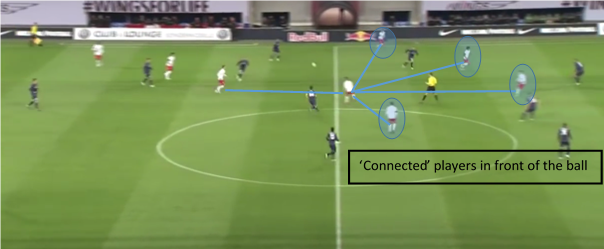
The option to play forwards might be not available straight away and therefore sideways passes will be also used in this approach. Players should remember and understand though that every pass sideways is a trigger for the passer to pass forwards and for the receivers to adjust their position and find pocket of space. Crucial aspect of this is to play sideways with urgency and intention to penetrate straight after.
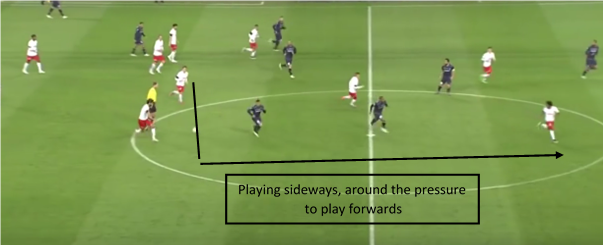
Overloading central areas
Attacking through the middle is the fastest route to the opposition goal and therefore central areas should be treated as a priority to play through. In order to make it effective, middle part of the pitch should be overloaded by wingers making inside movements as well as strikers being available to pass to, maintaining attacking connections.
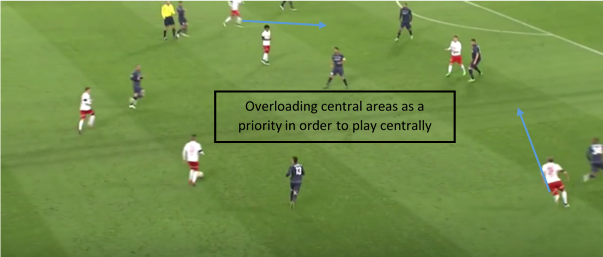
Narrowness in attack
One of the crucial components to achieve an overload in central zones as well as create connections between players, is attacking with narrowness. Players should therefore maintain short distances between each other, not changing their position dramatically from the defensive phase. What it might seem contradicting strategy to traditional attacking principles, it has benefits not only in attack but also out of possession and in transition to defence, providing a good organisation straight after losing the ball.
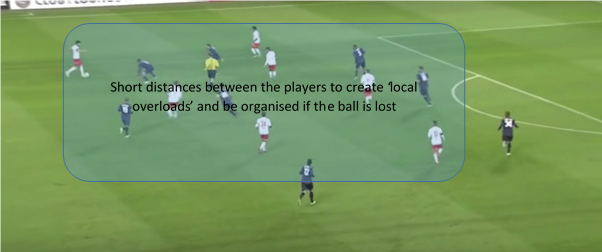
Combination play
Key component of RB Leipzig attacking strategy is the ability to combine play with the intention to go forwards as soon as possible. That is based around penetrative passes played between the players, breaking the opposition units as well as wall passes and forward runs. Very popular pattern involves a midfielder passing the ball to the striker and then following the ball to receive it off striker again behind the opposition players. That quick movement is difficult to defend as the player pressurising the passer initially is too late to turn (faces the ball) and track the forward run. The back pass might be played straight away or after the striker holds the ball. Support (connections) in behind the ball and sideways is crucial to have different options to play.
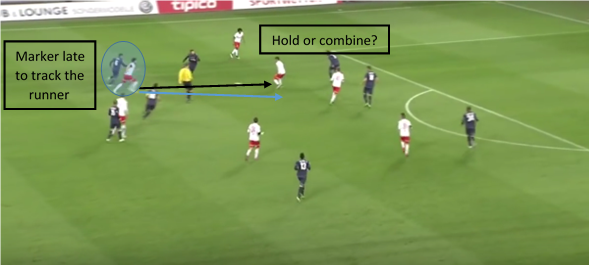
Second very popular type of attacking movements on the opposition’s half are vertical through balls in behind of the defence. In this case, the crucial role lies on striker’s diagonal movement and a timing and quality of a pass from midfield. This type of penetration is the priority one as it opens the route to the opposition’s goal directly.
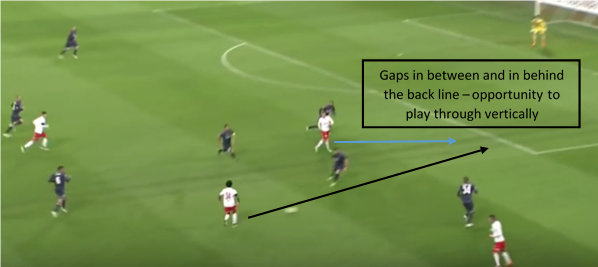
Attacking strategy of RB Leipzig shows a great example of how phases of the game are interconnected and influenced by each other. The way of attacking is always related to the way the team defends and makes transitions. Therefore, it is important to be realistic and plan a whole plan in and out of possession in which strategies in different phases will help and complement each other rather than contradict.
By Alex Trukan, Development Coach, Nottingham Forest
@AlexTrukan


